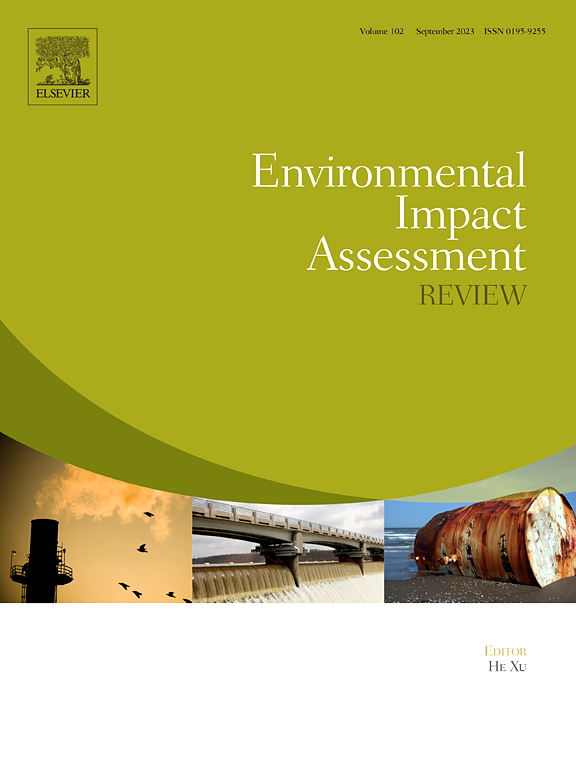Achieving sustainable development through National Innovation: Evidence from 131 countries
IF 9.8
1区 社会学
Q1 ENVIRONMENTAL STUDIES
引用次数: 0
Abstract
National innovation capacity (NIC) is key to achieving sustainable development. However, research on the link between NIC and sustainability remains limited. Based on data from 131 countries spanning 2015–2024, this study uses structural equation modeling to explore the impact mechanisms and dynamic characteristics of NIC's effects on the Sustainable Development Goals (SDGs). This paper specifically analyzes the pathways of NIC and its constituent elements (institutional, knowledge, and technological innovation capacity) in relation to SDGs under different target dimensions (social, economic, and environmental sustainability). The results show NIC promotes directly to SDGs with a contribution value of 0.286; however, the effects on economic, social and environmental SDGs vary significantly, with contribution values of 0.348, 0.103 and 0.193, respectively. Institutional, knowledge, and technological innovation capacities have indirect effects on SDGs through their interactions. Heterogeneity analyses reveal these effects are heterogeneous across countries according to geographic location, population density, income level, and economic development stage. Sensitivity analyses show enhancing each unit of NIC improves SDGs 9, 8, 7 and 11 by 0.727, 0.665, 0.624 and 0.536, respectively. SDGs 8, 9, and 11 are the most sensitive to institutional and technological innovation changes, while SDGs 5, 14, and 15 are insensitive to these innovation elements. Further analysis suggests NIC can enhance the collaborative achievement of the SDGs by mitigating trade-offs and amplifying synergies. Moreover, institutional innovation most effectively promotes synergies, while knowledge and technological innovation are more effective at alleviating trade-offs. The findings can inform both theoretical research and policy making for sustainable development.
通过国家创新实现可持续发展:来自131个国家的证据
国家创新能力是实现可持续发展的关键。然而,关于NIC与可持续性之间联系的研究仍然有限。基于2015-2024年131个国家的数据,本研究采用结构方程模型探讨了NIC对可持续发展目标(sdg)的影响机制和动态特征。本文具体分析了在不同目标维度(社会、经济和环境可持续性)下,NIC及其构成要素(制度、知识和技术创新能力)与可持续发展目标的关系。结果表明:NIC对可持续发展目标的直接促进贡献值为0.286;但对经济、社会和环境可持续发展目标的影响差异较大,贡献值分别为0.348、0.103和0.193。制度、知识和技术创新能力通过相互作用对可持续发展目标产生间接影响。异质性分析表明,不同国家的地理位置、人口密度、收入水平和经济发展阶段不同,这些影响也存在异质性。灵敏度分析显示,每增加一个NIC单元,可持续发展目标9、8、7和11分别提高0.727、0.665、0.624和0.536。可持续发展目标8、9和11对制度和技术创新变化最敏感,而可持续发展目标5、14和15对这些创新要素不敏感。进一步分析表明,NIC可以通过减少权衡和扩大协同效应来加强可持续发展目标的协同实现。此外,制度创新最有效地促进了协同效应,而知识和技术创新在缓解权衡方面更为有效。研究结果可以为可持续发展的理论研究和政策制定提供参考。
本文章由计算机程序翻译,如有差异,请以英文原文为准。
求助全文
约1分钟内获得全文
求助全文
来源期刊

Environmental Impact Assessment Review
ENVIRONMENTAL STUDIES-
CiteScore
12.60
自引率
10.10%
发文量
200
审稿时长
33 days
期刊介绍:
Environmental Impact Assessment Review is an interdisciplinary journal that serves a global audience of practitioners, policymakers, and academics involved in assessing the environmental impact of policies, projects, processes, and products. The journal focuses on innovative theory and practice in environmental impact assessment (EIA). Papers are expected to present innovative ideas, be topical, and coherent. The journal emphasizes concepts, methods, techniques, approaches, and systems related to EIA theory and practice.
 求助内容:
求助内容: 应助结果提醒方式:
应助结果提醒方式:


